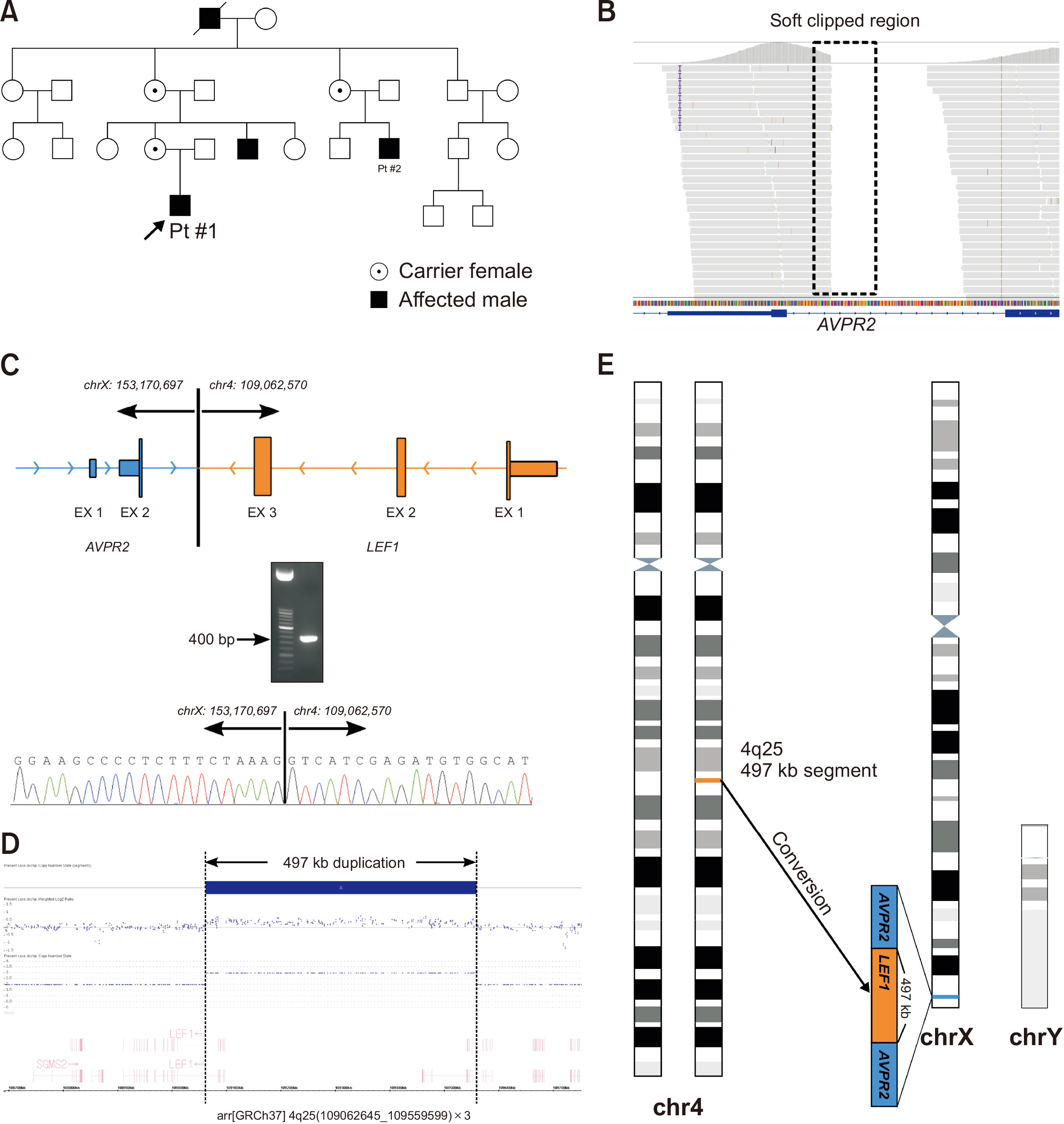Ann Lab Med.
2024 May;44(3):303-305. 10.3343/alm.2023.0361.
The First Case of Congenital Nephrogenic Diabetes Insipidus Caused by AVPR2 Disruption Because of 4q25 Insertional Translocation
- Affiliations
-
- 1Department of Laboratory Medicine and Genetics, Samsung Medical Center, Sungkyunkwan University School of Medicine, Seoul, Korea
- 2Department of Pediatrics, Seoul National University Children’s Hospital, Seoul National University College of Medicine, Seoul, Korea
- 3Department of Laboratory Medicine, Seoul National University Hospital, Seoul National University College of Medicine, Seoul, Korea
- 4Cancer Research Institute, Seoul National University College of Medicine, Seoul, Korea
- 5Department of Genomic Medicine, Seoul National University Hospital, Seoul, Korea
- KMID: 2555710
- DOI: http://doi.org/10.3343/alm.2023.0361
Figure
Reference
-
References
1. Bockenhauer D, Bichet DG. 2015; Pathophysiology, diagnosis and management of nephrogenic diabetes insipidus. Nat Rev Nephrol. 11:576–88. DOI: 10.1038/nrneph.2015.89. PMID: 26077742.2. Knoers N, Lemmink H. Adam MP, Everman DB, editors. 1993. Hereditary Nephrogenic Diabetes Insipidus. GeneReviews. University of Washington;Seattle:3. Dufour W, Alawbathani S, Jourdain AS, Asif M, Baujat G, Becker C, et al. 2022; Monoallelic and biallelic variants in LEF1 are associated with a new syndrome combining ectodermal dysplasia and limb malformations caused by altered WNT signaling. Genet Med. 24:1708–21. DOI: 10.1016/j.gim.2022.04.022. PMID: 35583550.4. Lévy J, Capri Y, Rachid M, Dupont C, Vermeesch JR, Devriendt K, et al. 2020; LEF1 haploinsufficiency causes ectodermal dysplasia. Clin Genet. 97:595–600. DOI: 10.1111/cge.13714. PMID: 32022899.
- Full Text Links
- Actions
-
Cited
- CITED
-
- Close
- Share
- Similar articles
-
- Congenital Nephrogenic Diabetes Insipidus Developing in the Mother and the Son
- A Familial Case of Nephrogenic Diabetes Insipidus Associated with a Mutation of the AVPR2 Gene
- A Case of Nephrogenic Diabetes Insipidus with a Rare X-linked Recessive Mutation in an Infant with Developmental and Growth Retardation Tracked by the Korean National Health Screening Program
- A case of nephrogenic diabetes insipidus associated with urinary incontinence
- A Case of Congenital Partial Nephrogenic Diabetes Insipidus


